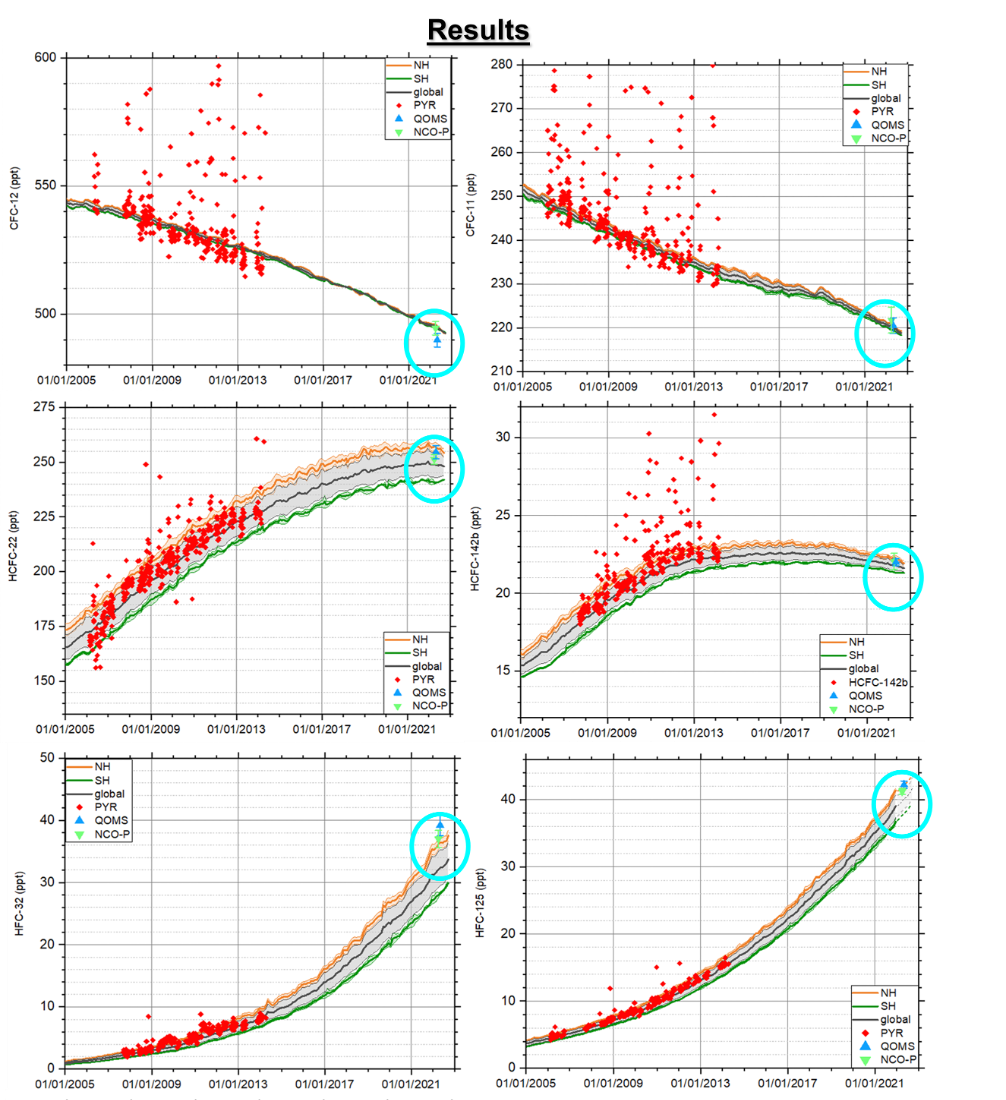Halocarbons Observations in the Himalaya
M. Maione1,2, J. Arduini1, P. Bonasoni2, Z. Cong, Y. Chen, E. Saikawa3, T. Yao, Q. Zhang, M. Xie, L. Tan and X. Wan
1University of Urbino, Department of Basic Sciences and Foundations, Urbino, Italy; +393404157897, E-mail: michela.maione@uniurb.it
2Institute of Atmospheric Sciences and Climate, National Research Council of Italy, Bologna, Italy
3Emory University, Department of Environmental Sciences, Atlanta, GA 30322
The Himalayas and the Tibetan Plateau (HTP) is a vast geographic area, covering ~ 5 million km2 and an average altitude of more than 4000 m (a.s.l) located between South and East Asia, two emission hot spots for several anthropogenic species, including the ozone-depleting (ODSs) and radiatively active halocarbons. Despite its crucial location, HTP is an under-sampled region with sparse measurements. Here we report the results from two field campaigns carried out in April and May 2022 at the Nepal Climate Laboratory-Pyramid station (27.95°N, 86.82°E, 5079 m a.s.l., NCO-P) in the high Khumbu valley, on the southern side of the Mt. Everest and at Mt. Everest (Qomolangma) base camp (28.19°N, 86.83°E, 5010 m a.s.l), respectively. During the campaigns, flask samples were collected, and 36 halocarbons were measured through Gas Chromatography-Mass Spectrometry. A comparison between the results from the 2022 campaigns and data from a monitoring programme running during 2008-2013 at NCO-P are also presented. The dominant ODSs exhibited a declining trend, reflecting the effectiveness of the Montreal Protocol. On the other hand, a large increase in HFCs and a high abundance of unregulated chlorocarbons (e.g., CH3Cl) is shown.
Figure 1. Halocarbons in the Himalayas and comparison with global, Northern Hemisphere and Southern Hemisphere average values

